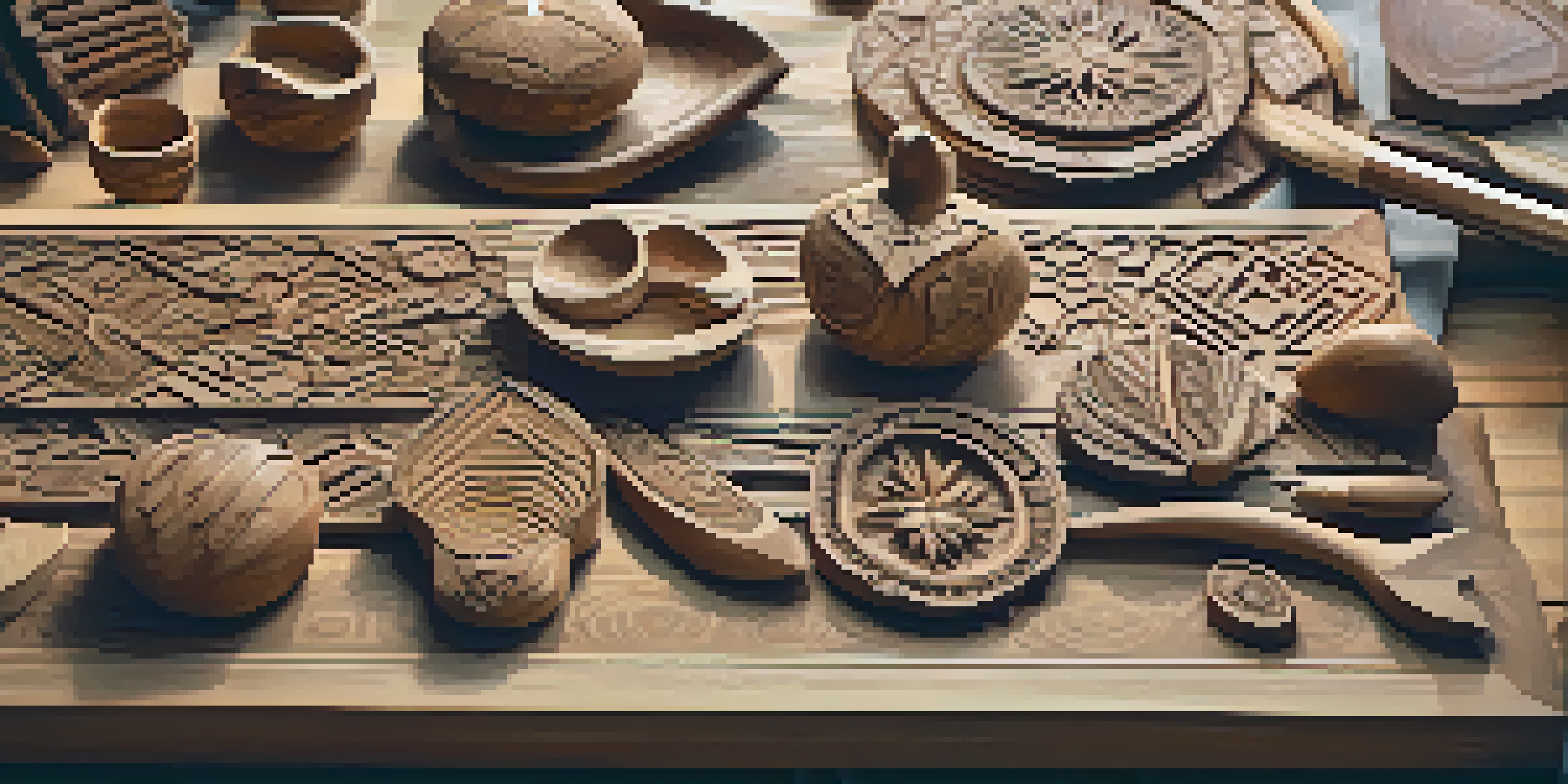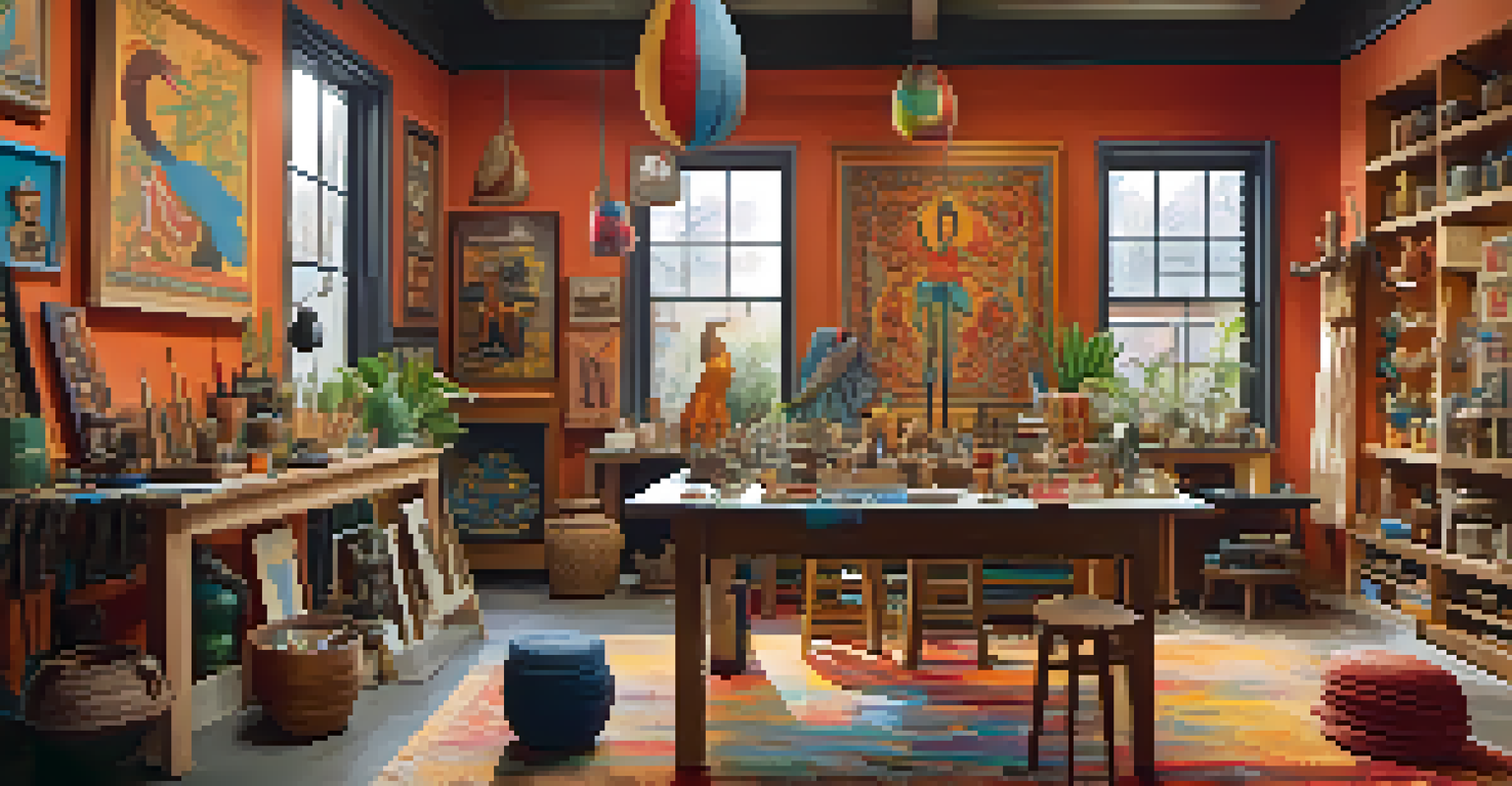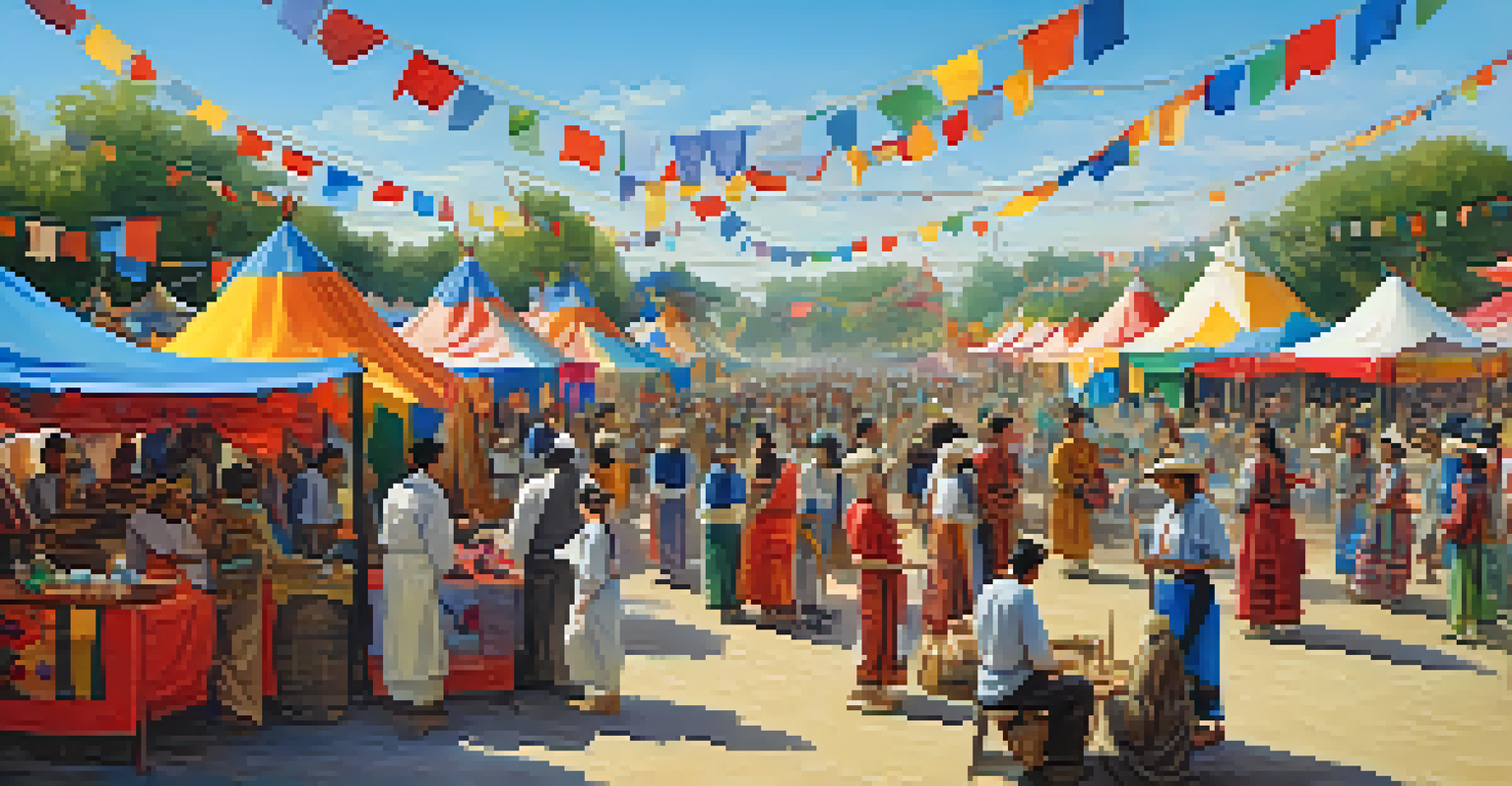Cultural Sensitivity in Carving: Guidelines for Artists

Understanding Cultural Sensitivity in Art
Cultural sensitivity in art refers to being aware of and respectful towards the traditions and practices of different cultures. For artists, this means recognizing the significance behind symbols, materials, and techniques that are often rooted in cultural history. When creating art that draws from various cultures, it's important to approach your work with an open mind and a willingness to learn.
Art is the most beautiful of all lies. It is the perfect representation of how we interpret culture and identity.
By understanding the context and meaning of cultural elements, artists can avoid appropriation—using aspects of a culture without permission or understanding. This not only shows respect but also enriches the artist's work, making it more authentic and meaningful. A thoughtful approach can lead to a deeper connection with the art form and its origins.
In essence, cultural sensitivity fosters a rich dialogue between the artist and the cultures they draw inspiration from. It encourages collaboration, learning, and appreciation, which can ultimately enhance the artistic process. So, let’s delve into the practical guidelines that can help artists navigate this sensitive terrain.
Researching Cultural Context and Significance
Before incorporating cultural elements into your carvings, it’s crucial to conduct thorough research. This means not only looking up facts but also exploring the stories and meanings behind the symbols you wish to use. Understanding the cultural context can prevent unintentional misrepresentation or offense.

Consider reaching out to cultural representatives or experts who can provide insight into their traditions. Engaging with community members can offer you firsthand perspectives that books or online articles may not convey. This kind of dialogue can lead to richer, more informed artistic expressions.
Embrace Cultural Research
Thorough research on cultural context and significance helps artists avoid misrepresentation and enriches their artistic expression.
By investing time in research and conversations, artists can create works that honor the cultures they draw from, rather than simply borrowing from them. This respect for cultural context can elevate the artist’s work and resonate with audiences on a deeper level.
Seeking Permission and Collaboration
When planning to use specific cultural symbols or motifs in your carvings, consider seeking permission from the culture’s custodians. This step demonstrates respect and acknowledgment of the culture's ownership of its traditions. In some cases, communities may have guidelines or protocols for sharing their cultural heritage.
Cultural sensitivity is not just a practice; it's a way of life that can foster understanding among diverse communities.
Collaboration with artists from the culture can also be a fruitful approach. Working together can lead to innovative ideas while ensuring that the cultural significance is preserved. This partnership can create a bridge between different artistic expressions and promote cultural exchange.
Ultimately, seeking permission and collaborating fosters mutual respect and understanding. It can transform your artwork into a celebration of cultural heritage rather than an appropriation, enriching both the artist's journey and the audience's experience.
Avoiding Stereotypes and Misrepresentation
One of the most important aspects of cultural sensitivity is avoiding stereotypes in your work. Stereotypes can perpetuate misconceptions and do a disservice to the cultures they represent. As an artist, strive to portray cultures in multifaceted ways that reflect their true diversity and complexity.
Misrepresentation can occur when artists rely on clichés or overly simplistic interpretations of a culture. Instead, aim to capture the authentic essence of the culture by highlighting its unique characteristics and stories. This not only enriches your artwork but also promotes a more accurate understanding of the culture among your audience.
Prioritize Collaboration
Seeking permission and collaborating with cultural custodians fosters respect and ensures the authenticity of artistic representations.
By being mindful of stereotypes and misrepresentation, you contribute to a more respectful and informed dialogue about cultural diversity. Your art can serve as a powerful tool for education and appreciation rather than a means of perpetuating harm.
Using Authentic Materials and Techniques
When creating carvings inspired by a specific culture, consider using authentic materials and techniques. This practice not only enhances the integrity of your work but also shows respect for the cultural traditions that have shaped these methods over generations. Authentic materials often carry their own stories and significance.
For example, if you’re inspired by Indigenous carving techniques, seek out the traditional woods or tools that are typically used. This not only aligns your work more closely with its cultural roots but also supports sustainability when sourced responsibly. Using authentic materials can create a more genuine connection between the artwork and its cultural background.
By choosing to honor traditional methods and materials, artists can create pieces that resonate more deeply with viewers and acknowledge the artistry of those who came before them. This approach showcases the beauty of cultural craftsmanship and inspires others to appreciate it as well.
Educating Yourself and Your Audience
As an artist, you have a unique platform to educate both yourself and your audience about the cultures you draw inspiration from. This involves sharing the stories and meanings behind your work, providing context that can help others appreciate its significance. Education fosters understanding and can dispel myths or misconceptions.
Consider including an artist's statement or educational materials alongside your carvings. This could detail the cultural inspirations, the research process, and any collaborative efforts you undertook. Such transparency not only honors the culture but also invites viewers into a deeper conversation about it.
Commit to Ongoing Education
Artists should continuously educate themselves and their audience about the cultures they draw from to promote understanding and appreciation.
By prioritizing education, artists can transform their work into a meaningful exchange of ideas and values. This approach not only enhances the viewer's experience but also helps to cultivate a greater appreciation for cultural diversity.
Continuing the Conversation and Learning
Cultural sensitivity is not a one-time effort but an ongoing journey. As an artist, it's important to remain open to feedback and willing to learn from your experiences. Engaging with the communities you draw inspiration from can provide valuable insights and help you grow in your practice.
Consider attending workshops, cultural events, or exhibitions that celebrate diverse artistic expressions. These experiences can deepen your understanding and appreciation of the cultures you are portraying. Additionally, they can connect you with other artists who share your commitment to cultural sensitivity.

Continuing the conversation about cultural sensitivity in art promotes a community of respect and understanding. As you evolve as an artist, embracing this journey can enhance both your artistic voice and the impact of your work.